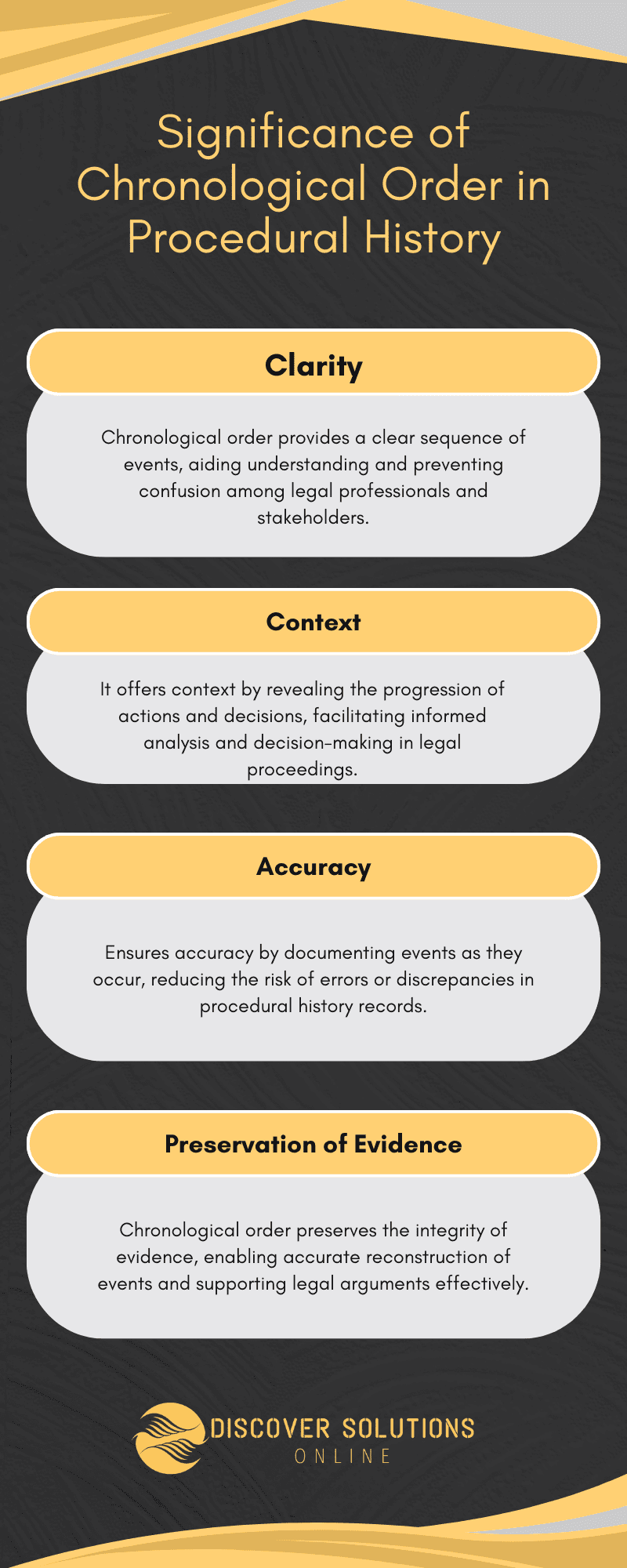Recording procedural history is a meticulous task essential for legal professionals to understand the sequence of events during legal hearings. However, this process comes with its challenges, notably dealing with incomplete or conflicting information. Incomplete or conflicting data can stem from various sources, including human error, intentional manipulation, or the dynamic nature of legal proceedings. Addressing these challenges requires strategic approaches, technological advancements, and effective collaboration among stakeholders.
Dealing with Incomplete or Conflicting Information
Dealing with incomplete or conflicting information in procedural history recording presents a formidable challenge for legal professionals. The complexity of legal proceedings, coupled with the fallibility of human memory and perception, often results in gaps or inconsistencies in the recorded history. Witnesses, participants, and court reporters may inadvertently omit crucial details or misinterpret events, further complicating the documentation process.
Moreover, deliberate misrepresentation or manipulation by opposing parties can exacerbate these challenges, leading to conflicting narratives and unreliable records. To address these issues, legal professionals employ a variety of strategies, including cross-referencing information from multiple sources, leveraging advanced technology for more accurate recording, and conducting rigorous fact-checking and verification processes. By employing a comprehensive approach and collaborating closely with stakeholders, legal professionals can mitigate the impact of incomplete or conflicting information and ensure the integrity of procedural history records.

Understanding the Challenge
In the realm of procedural history recording, dealing with incomplete or conflicting information poses a significant challenge. Legal proceedings are complex and multifaceted, involving numerous participants, intricate arguments, and dynamic interactions. As a result, it’s not uncommon for discrepancies to arise, whether due to human error, memory lapses, or intentional misrepresentation.
Sources of Incomplete Information
One primary source of incomplete information in procedural history recording is the fallibility of human memory and perception. Witnesses, participants, and even court reporters may inadvertently omit details or misinterpret events, leading to gaps in the recorded history. Moreover, the fast-paced and emotionally charged nature of legal proceedings can further compound these issues, making it challenging to capture every detail accurately.
Another source of incomplete information is the complexity of legal proceedings themselves. Court hearings often involve multiple witnesses, extensive documentation, and complex legal arguments, making it difficult to record every aspect comprehensively. Additionally, time constraints and logistical challenges may further impede the collection of complete information during proceedings.
Strategies for Mitigation
To address the challenge of incomplete information, legal professionals employ various strategies. Cross-referencing information from multiple sources is a common approach, allowing discrepancies to be identified and rectified. This may involve comparing witness testimonies, audio recordings, and written transcripts to ensure consistency and accuracy.
Another strategy involves leveraging technology to enhance the recording process. Advanced recording devices equipped with high-definition cameras and sensitive microphones can capture proceedings with greater clarity and detail. Additionally, transcription software powered by artificial intelligence can transcribe spoken words into written text more accurately, minimizing errors introduced by human transcriptionists.
Furthermore, legal professionals may employ expert witnesses or consult subject matter experts to fill in gaps in information. These experts can provide valuable insights based on their knowledge and experience, helping to reconstruct events or clarify complex issues.
Addressing Conflicts in Information
Conflicts in information can arise due to deliberate misrepresentation or manipulation, particularly in adversarial legal systems. Opposing parties may present conflicting narratives or selectively withhold evidence to strengthen their arguments. In such cases, legal professionals must carefully scrutinize the available information, evaluating its credibility and relevance to the case at hand.
One approach to addressing conflicts in information is through rigorous fact-checking and verification processes. Legal teams may conduct thorough investigations, gather additional evidence, and interview witnesses to corroborate or refute conflicting claims. Additionally, legal professionals may utilize forensic techniques, such as document analysis or digital forensics, to uncover inconsistencies or discrepancies in the evidence.
Addressing Issues of Bias and Subjectivity in Recording Procedural History
One of the most significant challenges that professionals encounter is the inherent presence of bias and subjectivity. Despite efforts to maintain objectivity, human nature inevitably introduces biases into the recording process. These biases can manifest in various forms, such as selective memory, personal beliefs, or even unintentional influence from external factors. Inaccurate or biased documentation can have profound implications, potentially affecting legal outcomes and undermining the integrity of the procedural history. Therefore, it is crucial to implement effective strategies to address these challenges and mitigate their impact on the accuracy and reliability of recorded information.
Understanding Bias in Recording Procedural History
Bias in recording procedural history can stem from various sources, including the perspectives and experiences of individuals involved in the documentation process. Legal professionals, court reporters, and other stakeholders may inadvertently inject their biases into the records through subjective interpretations or selective presentation of information. Moreover, external factors such as cultural influences, societal norms, and personal beliefs can shape perceptions and contribute to biased documentation. Recognizing the existence of bias is the first step towards mitigating its effects and ensuring the integrity of procedural history records.
Implementing Objective Recording Practices
To address bias and subjectivity in recording procedural history, it is essential to adopt objective recording practices that prioritize accuracy and impartiality. One approach is to establish standardized protocols and guidelines for documenting proceedings, ensuring consistency and uniformity in the recording process. This may involve utilizing specific language, formats, and notation systems to capture information objectively and comprehensively. Additionally, fostering a culture of openness and inclusivity within the recording team can encourage diverse perspectives and minimize the impact of individual biases.
Training and Education
Training and education play a crucial role in equipping professionals with the knowledge and skills necessary to identify and mitigate bias in recording procedural history. By raising awareness about the importance of objectivity and impartiality, organizations can empower individuals to recognize their biases and take proactive steps to minimize their influence on the recording process. Training programs can include modules on critical thinking, cultural competence, and ethical considerations, fostering a culture of accountability and integrity within the recording profession.
Peer Review and Quality Assurance
Peer review and quality assurance mechanisms serve as essential safeguards against bias and subjectivity in recorded procedural history. By subjecting documentation to rigorous scrutiny by impartial experts or review panels, organizations can identify and address potential inaccuracies or inconsistencies in the records. Peer review processes can involve cross-checking information against multiple sources, verifying the accuracy of transcripts, and evaluating the overall reliability of the recorded history. Additionally, implementing quality assurance measures such as audits, spot checks, and feedback loops can help identify systemic issues and ensure continuous improvement in recording practices.
Transparency and Accountability
Maintaining transparency and accountability is critical to addressing bias and subjectivity in recording procedural history. By openly acknowledging the presence of biases and the challenges inherent in the recording process, organizations can build trust and credibility with stakeholders. Transparency involves disclosing any potential conflicts of interest, disclosing sources of information, and providing access to documentation for review and verification purposes. Accountability entails holding individuals responsible for adhering to established recording standards and addressing instances of bias or misconduct promptly and effectively.
Professional Development and Collaboration
Encouraging ongoing professional development and collaboration can further mitigate bias and subjectivity in recording procedural history. By providing opportunities for continuous learning and skill development, organizations can empower recording professionals to stay abreast of best practices and emerging trends in the field. Collaborative efforts, such as interdisciplinary teamwork and consultation with subject matter experts, can offer valuable insights and perspectives that enhance the accuracy and reliability of recorded information. Additionally, fostering a supportive work environment that values diversity and inclusivity can promote open dialogue and minimize the influence of individual biases.
Strategies for Reconciling Discrepancies in Procedural History Records
In the realm of procedural history services, maintaining accuracy and consistency in documentation is paramount. However, discrepancies can arise due to various reasons, including human error, technical glitches, or differences in interpretation. Reconciling these discrepancies is essential to ensure the integrity and reliability of the procedural history records. In this section, we delve into some strategies for effectively addressing and resolving inconsistencies in procedural history records.
Before delving into strategies for reconciliation, it’s crucial to understand the root causes of discrepancies in procedural history records. By identifying the underlying factors contributing to inconsistencies, we can tailor our approach to address them effectively. Some common causes of discrepancies include:
Human Factors
Despite efforts to minimize errors, procedural history records may still encounter discrepancies due to various human factors. While humans are meticulous and diligent in their work, the complexity and nuances of legal proceedings can sometimes lead to unintentional errors or oversights. This includes challenges such as transcription errors, misinterpretation of events, or differences in perception among individuals responsible for documenting proceedings. While humans strive for accuracy, the inherent complexity of legal proceedings can introduce the potential for discrepancies.
Technical Glitches
In today’s digital age, reliance on technology for recording and storing procedural history data is widespread. While technology offers numerous benefits in terms of efficiency and accuracy, it is not immune to glitches or malfunctions. Technical issues such as software bugs, hardware failures, data corruption, or network disruptions can compromise the integrity of procedural history records. Even a minor glitch in the recording or storage system can lead to discrepancies or loss of crucial information, highlighting the need for robust contingency plans and backup mechanisms.
Interpretation Differences
Another common cause of discrepancies in procedural history records stems from differences in interpretation among individuals involved in the documentation process. Legal proceedings often involve complex terminology, nuanced arguments, and subjective assessments, leaving room for interpretation. Different individuals, such as court reporters, transcriptionists, or legal professionals, may perceive events differently or prioritize certain details over others. These variations in perception can result in inconsistencies in recorded accounts, underscoring the importance of clear communication and standardized documentation procedures.
Strategies for Reconciliation
Addressing and reconciling discrepancies in procedural history records require a systematic approach aimed at identifying, analyzing, and resolving inconsistencies. Here are some strategies to consider:
Regular Quality Assurance Checks
Implementing regular quality assurance checks can help detect discrepancies at an early stage, preventing them from escalating into more significant issues. This involves establishing robust protocols for reviewing procedural history records by experienced professionals. Quality assurance specialists can meticulously examine transcripts, audio recordings, or other documentation sources to identify inaccuracies or inconsistencies. By conducting thorough reviews at various stages of the documentation process, discrepancies can be promptly addressed and rectified.
Cross-Referencing and Verification
Cross-referencing procedural history records with other sources of information is a valuable strategy for validating the accuracy of recorded events. This may include comparing transcripts with court recordings, corroborating witness testimonies, or consulting official court documents. By cross-referencing multiple sources, discrepancies can be identified and resolved more effectively. Additionally, leveraging technology solutions such as metadata analysis or document comparison tools can streamline the verification process and enhance accuracy.
Standardized Documentation Procedures
Establishing standardized documentation procedures is essential for ensuring consistency and reliability in procedural history records. This includes defining clear guidelines for data entry, formatting, terminology usage, and citation practices. By providing a standardized framework for documenting legal proceedings, organizations can minimize the risk of errors and discrepancies. Training programs and ongoing education initiatives can help familiarize personnel with these guidelines and promote adherence to best practices.
Training and Education
Providing comprehensive training and ongoing education to personnel responsible for documenting procedural history records is essential. This includes equipping them with the necessary knowledge and skills to accurately capture and transcribe legal proceedings. Training programs may cover topics such as legal terminology, courtroom procedures, transcription techniques, and quality assurance protocols. By investing in the professional development of staff members, organizations can enhance the accuracy and reliability of procedural history records.
Collaborative Review Processes
Encouraging collaborative review processes involving multiple stakeholders can facilitate the identification and resolution of discrepancies. By leveraging the collective expertise and insights of legal professionals, transcriptionists, quality assurance specialists, and other relevant stakeholders, organizations can ensure comprehensive scrutiny of procedural history records. Collaborative review sessions allow for the exchange of feedback, clarification of ambiguous points, and consensus-building on contentious issues. This collaborative approach promotes transparency, accountability, and accuracy in the documentation process.
Continuous Improvement Initiatives
Promoting a culture of continuous improvement within the procedural history services team fosters ongoing efforts to enhance the quality and reliability of documentation. This includes soliciting feedback from stakeholders, conducting post-mortem analyses of discrepancies, and implementing corrective actions to prevent recurrence. By identifying areas for improvement and implementing targeted interventions, organizations can refine their documentation processes and mitigate the risk of errors over time. Continuous improvement initiatives should be integrated into regular workflows to ensure sustained progress and adaptation to evolving requirements.
Overcoming Logistical Challenges in Procedural History Documentation: Leveraging Human Expertise for Success
In the intricate process of procedural history documentation, human involvement stands as both a crucial asset and a significant challenge. Unlike machines, humans bring intuition, empathy, and adaptability to the documentation process. However, harnessing these qualities effectively amidst the complexities of legal proceedings poses unique logistical hurdles. Here, we delve into the intricacies of human involvement and explore innovative strategies to optimize its contribution to procedural history documentation.
Expertise and Domain Knowledge
Procedural history documentation demands a deep understanding of legal terminology, proceedings, and nuances. Professionals responsible for noting down events must possess domain expertise to accurately capture and contextualize information as it unfolds. However, acquiring and maintaining such expertise can be a perpetual challenge in the dynamic legal landscape.
Solution: Continuous Learning and Specialization
To address expertise gaps, organizations can invest in continuous learning initiatives and encourage specialization among professionals responsible for noting down procedural history. Offering access to legal education resources, workshops, and certification programs can help deepen their understanding of legal concepts and terminology. Moreover, fostering collaboration with legal experts and mentors can provide invaluable insights and guidance, enhancing the quality and accuracy of procedural history documentation.
Communication and Collaboration
In procedural history documentation, effective communication and collaboration are paramount for synchronizing efforts, resolving discrepancies, and ensuring accuracy. However, coordinating multiple stakeholders, including legal teams, witnesses, and professionals responsible for noting down events, in a structured and timely manner poses logistical challenges.
Solution: Streamlined Communication Channels and Protocols
Establishing streamlined communication channels and protocols can streamline collaboration and facilitate information exchange in procedural history documentation. Implementing centralized communication platforms, such as dedicated chat channels or project management systems, can ensure timely updates and foster transparency among team members. Additionally, defining clear roles, responsibilities, and escalation procedures can promote accountability and mitigate misunderstandings, enhancing overall efficiency and coordination.
Adaptability and Resilience
Procedural history documentation often unfolds in unpredictable and high-pressure scenarios, requiring professionals responsible for noting down events to demonstrate adaptability and resilience in response to changing circumstances. However, maintaining composure and accuracy amidst evolving dynamics can be inherently challenging.
Solution: Training in Stress Management and Crisis Response
Providing training in stress management and crisis response techniques can equip professionals responsible for noting down events with the tools and mindset needed to navigate challenging situations effectively. Incorporating simulation exercises or role-playing scenarios into training programs can simulate real-world scenarios and help build confidence and resilience. Moreover, promoting a culture of psychological safety and support within the organization can encourage open communication and mutual assistance, empowering professionals to perform at their best under pressure.
Ethical Considerations
Procedural history documentation inherently involves ethical considerations, including confidentiality, neutrality, and integrity. Professionals responsible for noting down events must adhere to ethical guidelines to uphold the trust and credibility of the documentation process. However, navigating ethical dilemmas in procedural history settings can be complex and demanding.
Solution: Ethical Frameworks and Decision-Making Protocols
Establishing clear ethical frameworks and decision-making protocols can provide guidance to professionals responsible for noting down events when faced with ethical dilemmas. Organizations can develop comprehensive ethical guidelines that outline principles, standards, and best practices for ethical conduct in procedural history documentation. Additionally, fostering a culture of ethical awareness and accountability through regular training, discussions, and case studies can promote ethical decision-making and ensure alignment with organizational values.
Technology Integration
While human expertise remains invaluable, leveraging technology can enhance the efficiency and accuracy of procedural history documentation. However, integrating technology into existing workflows and ensuring compatibility with human processes can present logistical challenges.
Solution: User-Friendly Technology Adoption
Organizations can facilitate the adoption of user-friendly technology solutions that complement human involvement in procedural history documentation. This may include intuitive software interfaces designed to streamline data entry and retrieval, automated transcription tools to assist with note-taking, and cloud-based platforms for seamless collaboration and data storage. Providing comprehensive training and technical support can empower professionals to leverage technology effectively while maintaining their focus on core responsibilities.
Quality Assurance and Review Mechanisms
Ensuring the accuracy and reliability of procedural history documentation requires robust quality assurance and review mechanisms. However, implementing effective review processes without disrupting workflow efficiency can be a delicate balance.
Solution: Iterative Review Processes
Incorporating iterative review processes into procedural history documentation workflows can help maintain quality standards without imposing undue burden on professionals. Establishing checkpoints at key milestones allows for regular feedback and adjustments, ensuring that any errors or inconsistencies are promptly identified and addressed. Moreover, leveraging technology-enabled review tools, such as automated error detection algorithms, can enhance the efficiency and effectiveness of quality assurance efforts.
Discover Solutions Online: Our Role in Recording Procedural History
At Discover Solutions Online, we understand the importance of accurate and reliable procedural history recording. Our comprehensive services are designed to help clients navigate the complexities of recording legal proceedings, including addressing challenges related to incomplete or conflicting information.
Our team of experienced professionals is dedicated to ensuring that every detail of a legal hearing is accurately documented. Moreover, our rigorous quality assurance processes ensure that the recorded information is thoroughly reviewed and verified for accuracy.
We understand that effective communication is essential for resolving discrepancies and ensuring alignment on the contents of the procedural history. By fostering a collaborative partnership, we empower our clients to navigate the legal landscape with confidence and clarity.
Discover Solutions Online is committed to providing comprehensive procedural history services that prioritize accuracy, impartiality, and integrity. Through our meticulous documentation process, we ensure that all events and actions are recorded objectively and comprehensively, minimizing the impact of bias and subjectivity. Our team of experienced professionals undergoes rigorous training and education to recognize and mitigate potential sources of bias, ensuring the highest standards of quality and reliability in our records.
We foster a culture of openness, collaboration, and continuous improvement within our organization, encouraging ongoing professional development and interdisciplinary teamwork to enhance the accuracy and reliability of our recorded information. Our peer review and quality assurance processes guarantee that our documentation undergoes thorough scrutiny to identify and address any biases or inaccuracies promptly. We remain transparent and accountable to our clients, providing open access to documentation and fostering a culture of trust and integrity in everything we do.
At Discover Solutions Online, we understand the importance of recording procedural history with precision and impartiality. By partnering with us, clients can trust that their procedural history needs are in capable hands, allowing them to focus on their legal proceedings with confidence and peace of mind.





